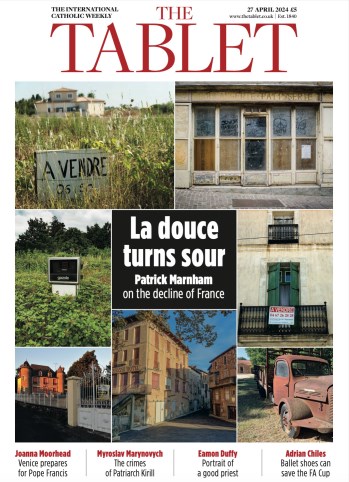With reference to Sarah Mac Donald's report on Archbishop Neary's vision “for a smaller more dynamic and lay-centred Church” (The Tablet, 15 November) I should like to draw attention to a few points.
The archbishop comments on the shrinking number of teenagers attending Mass. For almost five years I was privileged in being allowed to lead gospel meditation with groups of teenage girls in the Presentation College, opposite the cathedral in Tuam. The girls came of their own volition. I used an Ignatian contemplative approach which the girls, aged 13 to 18, took to easily. As they shared their experiences of what happened during the prayer, I was often awed by their simplicity and direct relationship with Jesus. Many of these girls told me that church was boring and that they often did not go to Mass.
Archbishop Neary has the authority to revert to the previous liturgical language which was meaningful and engaging. Perhaps there is a connection between “boring” and a theologically accurate language which is often incomprehensible and long-winded. It doesn't seem to be a vehicle for developing meaningful relationships between teenagers and God.
Archbishop Neary talks of a “lay-centred” Church. In October 2013, and again in October 2014, a group of “concerned (lay) Catholics” in the Tuam diocese organised public meetings. These meetings, which were well attended by diocesan clergy, gave lay people an opportunity to share concerns and hopes for the Church to which they are committed. The 2014 meeting was led by one of the Killaloe women (The Tablet, 14 October). This meeting was totally concerned with lay involvement: adult faith formation, the training of laity in various ministries and the need for dialogue between bishops, priests and lay people. Six local bishops were invited both to this meeting and the previous one. Sadly none of the bishops came, and four didn't even respond to the invitation. This, I feel, does put a question mark over their attitudes towards lay involvement.
We committed Christians do not describe ourselves as “knights in shining armour”, to quote Archbishop Neary. Rather we see ourselves as followers of Jesus, willing to be vulnerable in our desire to be good disciples. The Holy Spirit is active amongst the laity. During the last few months a Jesuit in Galway has been giving evening talks on the mystics. The lay attendance has been huge. The two public meetings in the Tuam Diocese attracted about 200 people to each of them. Pope Francis encourages us to discuss, to make mistakes and to listen to each other. He talks of a loving and welcoming church open to all. My plea to the bishops, and especially to Archbishop Neary of Tuam, is please start listening to the laity, to the signs of the times.
June McAllister, Dunmore, Co. Galway
What does "without Mass there is no Church" mean? ("On the edge of the abyss in Ireland" 8 November). One of the bitterest of WWI lines of poetry are Thomas Hardy's "after two thousand years of Mass / we've got as far as poison gas".
The history of mission suggests it is baptism that creates the Church. After baptising missionaries moved on leaving local people in charge, not all of them men. In Bangladesh I saw the descendants of the Portuguese Padroado who had survived without priests. Yet it was their daughters in boarding school in Calcutta who joined Mother Theresa and provided one of the greatest witness to Christian faith in our lifetime.
In the same issue as Fr Hoban's article you highlight how women are handing on the tradition as theologians. Another article describes the real obstacles to that tradition: war, racism, globalisation. Archbishop Romero restricted Mass at one point during the war in El Salvador. A moratorium on Mass might make us more missionary. And perhaps more ecumenical.
Willy Slavin, Glasgow


 Loading ...
Loading ...